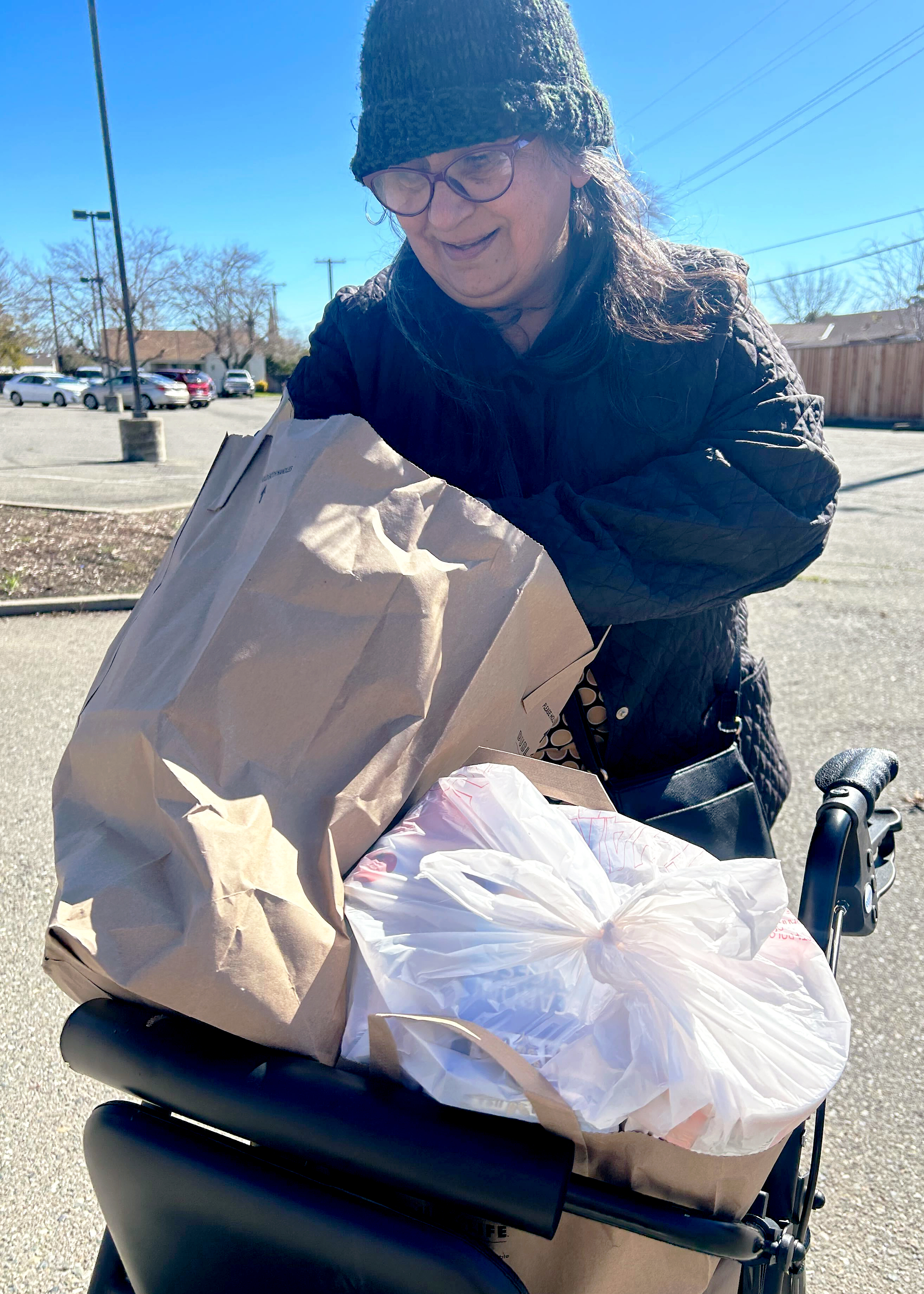Pandemic food benefits end for millions of Californians. What now?
California politics
Mackenzie MaysMarch 2, 2023
Nearly 3 million households in California will no longer receive a perk
federal
food benefits granted during the COVID-19 pandemic, putting pressure on budgets as people continue to struggle with the rising cost of living.
Since March 2020, low-income Californians have seen an increase in CalFresh benefits, the state version of the federal Supplemental Nutrition Assistance Program, formerly known as food stamps. But that emergency aid ends this month as Congress voted to end the extra benefits as part of the federal omnibus spending plan.
Now the pressure is on the Democratic administration. Gavin Newsom and state lawmakers to fill the gaps as experts warn of worsening food insecurity and food banks scramble to prepare for an influx of customers.
The average CalFresh recipient is expected to lose $82 per month, and the average household about $200 per month. The decline will be greatest for older Californians, with monthly benefits expected to drop from $281 to $23 for some.
Delia Priscilla Ortega Darden lined up at the South Sacramento Interfaith Partnership food bank in the 48-degree wind Wednesday to pick up free groceries after her CalFresh benefit ran out days ago.

Ortega Darden, 64,
she said
then lives in her car
she said that
she was no longer able to work due to health problems, including multiple sclerosis. She uses local food banks to make ends meet, but benefits from CalFresh which can be used to buy fresh fruits and veggies are crucial to her health, she said. She uses a walker and said a better diet has helped with muscle cramps in her legs.
Like nearly 5 million other Californians enrolled in the program, she will see at least $95 in benefits reduced as a result of the end of federal emergency appropriations. That means she will rely more on food banks and places like the Dollar Tree, where she often buys cheap foods like bologna to make ends meet, she said.
“My whole health has improved,” Ortega Darden said of CalFresh.
While the governor of New Jersey
wrong
Phil Murphy, a Democrat, signed a bill last month to increase the state’s SNAP minimum benefits in light of the federal cut. Newsom has so far advised against major current spending pledges as the state faces a projected budget deficit of $22.5 billion.
Senator Caroline Menjivar (D-San Fernando Valley) has introduced legislation that more than doubles the minimum
monthly
CalFresh benefit in California from $23 to $50. In New Jersey has the minimum
rise up rise
up to $95.
The legislation would cost the state dearly; more than $500 million per month. But Menjivar said reducing food insecurity is a preventative measure that ultimately saves state costs exacerbated by poverty, including costs related to the homelessness crisis.
Although inflation has eased, California remains one of the most expensive places to live in the country. Menjivar said this should be considered by Newsom and the legislature in supporting the state’s safety net programs.
“It crosses so many different things and can prevent so many different things. It’s about making sure our most vulnerable families don’t fall further into poverty,” she said. “What can you afford for $23 a month right now?”
The state budget proposed by Newsom in January did not reflect the impact of the Consolidated Appropriations Act passed by Congress. Changes to the budget are expected in May. However, the governor has so far urged caution regarding pending spending commitments.
“At this point in the process, we’re not going to commit to any additional state funds for some programs until we have a better idea of what the fiscal picture looks like,” said HD Palmer, spokesman for Newsom’s Treasury Department.
The California Department of Social Services, which has been warning of the end of benefits for months, pointed to food banks as a solution, saying they are working to be “as prepared as possible for potentially increased demand.”
But that’s not enough, says Stacia Hill Levenfeld, CEO of the California Assn. of Food Banks, who called the timing “catastrophic”. The loss of the pandemic food benefits, plus the final expiration date of electronic transfer cards for low-income children, represents a 30% loss to the state’s food safety net, she said.
There is no way that food banks alone can fill the gap,” said Hill Levenfeld.
Last year, nearly 1 in 4 Los Angeles County residents, about 800,000 households, experienced food insecurity, according to a report from the USC Dornsife College of Letters, Arts and Sciences.
“Expiring the emergency stimulus from the CalFresh program while inflation and food costs remain high could push low-income Angelenos to the precipice of a hunger cliff,”
said
Kayla de la Haye, a USC Dornsife associate professor of population and public health sciences
said
.
On Tuesday, Newsom officially ended California’s COVID-19 state of emergency. The end of the COVID-19 era benefits for low-income families could lead to more
attempts to
legislation to broaden the social safety net.
On Monday, Assemblyman Miguel Santiago (D-Los Angeles) introduced a bill to extend a child tax credit to more low-income families, citing food and rent costs and the need for “essential inflation relief.”
Andrew Cheyne, public policy director for GRACE, at an anti-poverty organization, said CalFresh’s allotments have long been inadequate. Now people who have become accustomed to years of increased benefits will struggle.
“It’s just really unimaginable to think of the households that go to the grocery store expecting to have money in their account and not have what they need to buy groceries,” he said. “You look at the level of rising food costs over the past year, let alone rising rent costs, and you know people really relied on that amount.”
Fernando Dowling is an author and political journalist who writes for 24 News Globe. He has a deep understanding of the political landscape and a passion for analyzing the latest political trends and news.



